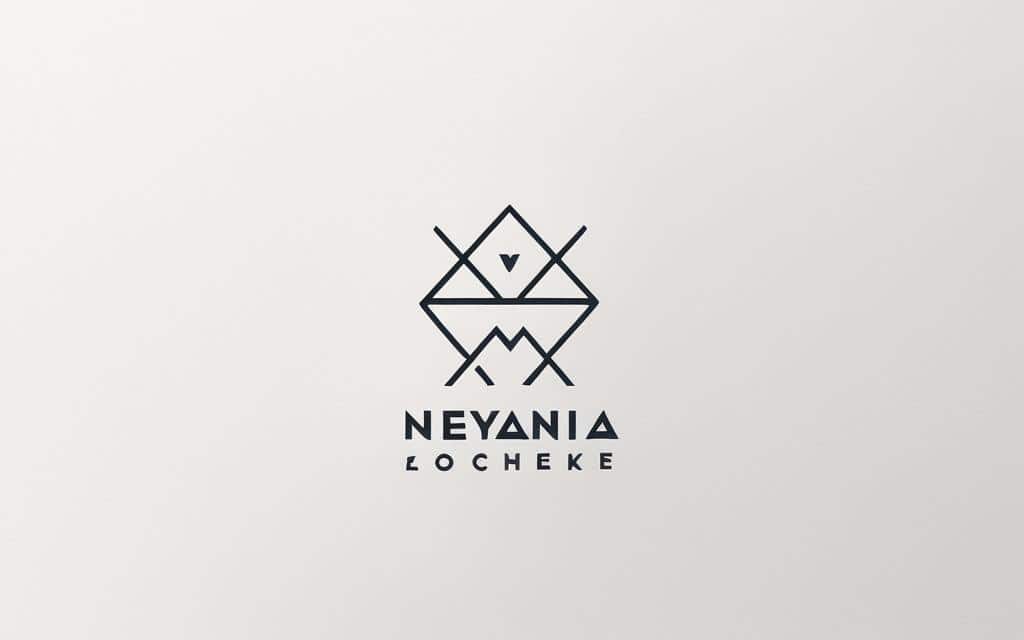Table of Contents
Welcome to our article on minimalist branding. In today’s fast-paced and visually saturated world, businesses need to adopt effective branding strategies to stand out from the crowd. Minimalist branding offers a powerful approach that focuses on simplicity and clarity, allowing businesses to effectively communicate their message and values to their target audience.
Minimalist branding is all about keeping it simple. By stripping away unnecessary complexities and emphasizing the essentials, businesses can create a strong and memorable brand identity. This approach helps consumers easily understand and remember the brand’s values and offerings, leading to increased recognition and engagement.
Throughout this article, we will explore the benefits of minimalist branding, the power of minimalist websites, the appeal of minimalist logos, and the techniques and principles of minimalist design. We will also highlight potential pitfalls and provide insights on effective implementation.
So, whether you are a small business, a startup, or an established company, embracing minimalist branding can contribute to your long-term success. Let’s dive in and discover the art of minimalist branding together.
The Benefits of Minimalist Branding
Minimalist branding offers several key benefits. Firstly, it allows for clear and effective communication of a brand’s message. By removing clutter and unnecessary elements, minimalist branding ensures that the brand’s values and offerings are easily understood and remembered by consumers.
Secondly, minimalist branding helps to build brand recognition. The simplicity and consistency of a minimalist brand identity make it more memorable and distinguishable from competitors. A minimalist brand uses minimal design elements to create a distinctive visual identity that stands out.
Finally, minimalist branding has been shown to increase engagement with consumers. Clear and concise branding messaging captures the attention of consumers and encourages them to connect with the brand on a deeper level. Minimalist branding’s simplicity allows consumers to easily understand and relate to the brand’s message, resulting in increased engagement.
The Importance of Clear Communication
“Simplicity is the ultimate sophistication.” – Leonardo da Vinci
Clear communication is crucial in building a successful brand. Minimalist branding facilitates clear communication by eliminating unnecessary distractions and focusing on the essentials. With a minimalist approach, a brand’s message becomes more memorable and impactful, resonating with consumers in a cluttered marketplace.
Building Brand Recognition
“Simplicity is the keynote of all true elegance.” – Coco Chanel
A minimalist brand identity is instantly recognizable and memorable. By utilizing minimal design elements, a brand can create a distinct visual identity that stands out from the competition. Consistency in branding across different platforms and touchpoints further strengthens brand recognition, making it easier for consumers to identify and connect with the brand.
Increase Engagement with Consumers
“The best way to engage honestly with the marketplace via Twitter is to never use the words ‘engage,’ ‘honestly’ or ‘marketplace’.” – Jeffrey Zeldman
Minimalist branding captures the attention of consumers by delivering a clear and compelling message. The simplicity and clarity of minimalist design draw consumers in and encourage them to engage with the brand on a deeper level. Whether through clean visuals, concise copy, or well-crafted branding elements, minimalist branding increases consumer engagement by making the brand more accessible and relatable.
Summary
Minimalist branding offers numerous advantages for businesses. By focusing on clear communication, creating a memorable brand identity, and increasing engagement with consumers, minimalist branding becomes a powerful tool for businesses to establish a strong presence in a crowded marketplace.
The Power of Minimalist Websites
Minimalism isn’t just limited to branding; it extends to the realm of website design as well. Minimalist websites are built on clean layouts, limited color palettes, and a focus on content over flashy graphics. This minimalist approach enables websites to connect with users in simple yet powerful ways, providing an exceptional user experience.
Minimalist websites prioritize negative space to create a sense of balance and clarity. By embracing clear visual hierarchy and implementing minimal navigation, these websites offer a clean and user-friendly interface. Whether accessed on a desktop or mobile device, minimalist websites remain versatile and adaptable, ensuring a seamless experience across various platforms.
Streamlined Content Delivery
The minimalist design philosophy places emphasis on delivering content efficiently and effectively. By decluttering layouts and minimizing distractions, websites can present information in a visually appealing and digestible manner. Users can focus on the essence of the message without being overwhelmed by unnecessary elements.
Enhanced User Experience
Minimalist websites excel in providing a user-friendly experience. With a clean design and intuitive navigation, visitors can easily find what they’re looking for. The simplicity of these websites eliminates confusion and reduces the learning curve, making it effortless for users to interact with the site and achieve their goals.
“Less is more. A minimalist approach to website design allows users to experience content without unnecessary distractions, resulting in a more engaging and enjoyable browsing experience.”
Optimized Loading Times
Clean design and minimalistic elements contribute to faster loading times. Websites devoid of unnecessary graphics and complex animations load quickly, ensuring that users don’t experience frustrating delays. This optimized performance enhances the overall user experience, leaving a positive impression and increasing the likelihood of return visits.
| Advantages of Minimalist Websites | |
|---|---|
| Improved focus on content | Enhanced usability and navigation |
| Increased loading speed | Consistent and cohesive branding |
| Simplified user experience | Strong visual impact |
The Timeless Appeal of Minimalist Logos
In the realm of logo design, minimalism wields significant influence. Minimalist logos focus on the fundamental elements, employing simplicity and iconic imagery that easily resonate with viewers while remaining memorable. This timeless approach to design ensures that minimalist logos can weather the ebb and flow of ever-changing trends, standing steadfast against the test of time. Not only do minimalist logos possess an enduring quality, but they also contribute to a strong brand identity, exuding sophistication and modernity. By embracing a minimalist approach to logo design, businesses can forge a lasting impression on their audience, elevating their brand to new heights.
“Simplicity is the ultimate form of sophistication.” – Leonardo da Vinci
The power of minimal logos lies in their ability to convey a message with utmost clarity and impact in a visually concise manner. By stripping away unnecessary complexities, the essence of the brand is distilled into a single, striking image, instantly recognizable and evocative. The minimalistic design of logos allows them to seamlessly integrate into various brand touchpoints – from product packaging to digital platforms – unified in their representation of the brand’s ethos.
The Elements of Timelessness
Minimalist logos exhibit several key characteristics that contribute to their timeless appeal:
- Simplicity: Minimalist logos rely on clean lines, subtle detailing, and uncomplicated forms, resulting in an aesthetic that is both elegant and uncluttered.
- Iconic Imagery: By using iconic symbols or abstract representations, minimalist logos transcend language and cultural barriers, allowing for global recognition.
- Balance: The careful arrangement of elements within the logo design creates a sense of harmony and equilibrium, enhancing its visual appeal.
- Adaptability: Minimal logos excel in versatility, seamlessly adapting to various contexts and mediums, retaining their impact across print and digital platforms.
These elements combine to create minimalist logos that possess an enduring quality, bridging the gap between past, present, and future.
The Power of Less
Minimalist logos harness the power of simplicity to evoke emotions, leaving a lasting impression on consumers. The absence of extraneous detail allows the essential message of the brand to shine through, distilling its essence into a single symbol. This reductionist approach enables minimal logos to communicate with utmost clarity, fostering a deep connection with the audience.
To illustrate the appeal of minimalist logos, let’s examine two iconic examples:
| Logo | Brand |
|---|---|
| Apple | |
| Nike |
These minimalistic logos, crafted with meticulous attention to detail, have become iconic symbols in their own right, transcending their corporate identities to represent innovation, creativity, and athletic excellence.
By adopting a minimalist approach to logo design, businesses can create a visual identity rooted in timelessness, effectively capturing the essence of their brand while leaving a lasting impression on their target audience.
The Techniques of Minimalist Website Design
Minimalist website design relies on several techniques to create a visually appealing and functional user experience. By strategically implementing visual hierarchy, utilizing a limited color palette, and incorporating negative space, minimalist websites can effectively convey information, guide user attention, and create a sense of balance and harmony within the design.
Visual Hierarchy
In minimalist website design, visual hierarchy plays a critical role in guiding users’ attention and organizing content. Varying fonts, scales, and weights are used to create contrast and hierarchy, making it easier for users to navigate and understand the information presented. By prioritizing key elements and employing clear typography, designers can ensure that the most important messages are communicated effectively.
Strategic Use of Color
The strategic use of color is another fundamental aspect of minimalist website design. Minimalistic websites typically employ a limited color palette, consisting of only a few carefully selected colors. This intentional restraint creates a clean and cohesive visual aesthetic. By strategically choosing colors that align with the brand’s identity and message, designers can create a visually appealing experience that enhances the overall user interface and reinforces brand recognition.
Negative Space
Negative space, also known as white space, is the empty space between design elements. In minimalist website design, negative space is used to create separation between different sections of content, allowing each element to breathe and stand out on its own. This empty space contributes to a sense of balance, clarity, and elegance, making the user interface feel uncluttered and inviting. By strategically incorporating negative space, designers can enhance readability, improve user focus, and create a seamless and intuitive browsing experience.
| Techniques | Description |
|---|---|
| Visual Hierarchy | Using varying fonts, scales, and weights to prioritize content and guide user attention. |
| Strategic Use of Color | Implementing a limited color palette that aligns with the brand’s identity and message. |
| Negative Space | Incorporating empty space between design elements to create a sense of balance and clarity. |
The Pitfalls and Principles of Minimalist Design
While minimalist design offers many benefits, it is important to be aware of potential drawbacks to avoid. Subpar minimalist designs often suffer from bland visuals, choppy workflows, unclear navigation, and slow performance. These issues can hinder user experience and impact the overall effectiveness of the design.
However, by following a few key design principles, businesses can ensure the effective implementation of minimalist design:
- Purpose and vision: Designers should have a clear understanding of the purpose and vision of the design. This helps in creating a focused and cohesive minimalist design that aligns with the brand and its objectives.
- Know the audience: Intimate knowledge of the target audience is crucial for effective minimalist design. By understanding their needs, preferences, and expectations, designers can create designs that resonate with the target audience and encourage engagement.
- Align goals with users: It’s essential to align the goals of the design with the goals of the users. A minimalist design should serve the users’ needs and provide a seamless user experience, whether it’s navigating through a website or interacting with a mobile app.
- Determine essential elements: Minimalist design involves prioritizing the essential elements and removing excessive elements that may clutter the design. Designers should identify what elements are necessary for effective communication and functionality, while eliminating anything that doesn’t contribute to the overall design goals.
To ensure the success of minimalist design, continuous testing and refinement are necessary. By regularly evaluating the design and gathering feedback from users, designers can make informed decisions to improve the design’s performance and address any potential issues that may arise.
By adhering to these design principles and avoiding potential pitfalls, businesses can achieve minimalist designs that are visually appealing, functional, and impactful in conveying their brand message and engaging with their target audience.
Conclusion
Minimalist branding and design offer a powerful approach for businesses to effectively communicate their message, build a memorable brand identity, and engage with consumers on a deeper level.
By keeping it simple and focusing on the essentials, businesses can create a timeless and versatile branding strategy that will stand the test of time.
With careful planning and implementation, minimalist branding and design can contribute to long-term success in today’s fast-paced and visually saturated world.
FAQ
What is minimalist branding?
Minimalist branding is an approach to marketing that focuses on simplicity and clarity by stripping away unnecessary complexities and emphasizing the essentials to effectively communicate a brand’s message and values.
What are the benefits of minimalist branding?
Minimalist branding offers clear and effective communication of a brand’s message, helps build brand recognition, and increases engagement with consumers.
How does minimalist design apply to websites?
Minimalist websites feature clean layouts, limited color palettes, and a focus on content over flashy graphics, creating a simple yet powerful connection with users.
Why are minimalist logos effective?
Minimalist logos use simple and iconic elements that are easily recognizable and memorable, ensuring longevity and contributing to a strong brand identity.
What techniques are used in minimalist website design?
Visual hierarchy, strategic use of color, and negative space are essential techniques in minimalist website design that create a visually appealing and functional user experience.
What are potential pitfalls and principles of minimalist design?
Bland visuals, choppy workflows, unclear navigation, and slow performance can be pitfalls, while focusing on purpose and vision, knowing the audience, and aligning site goals with user goals are key principles for effective implementation.













